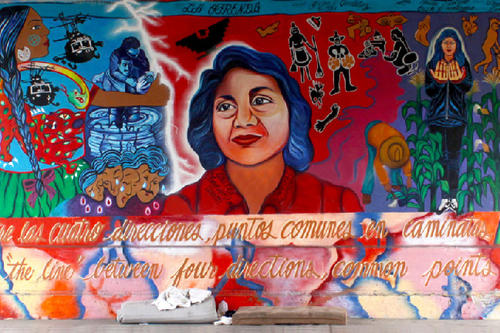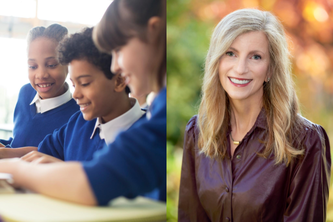
Jenna Cushing-Leubner has spent the last three years working with Roosevelt High School in Minnesota to support students with Spanish-speaking backgrounds who were experiencing a lack of opportunities to engage in meaningful, intellectual educational experiences and were at-risk of being pushed out of school before graduating.
Cushing-Leubner, a University of Minnesota PhD student, helped create a series of classes that enable bilingual high schoolers to develop their Spanish language and literacy by engaging in issues of importance, particularly to US Latina/os. “The kids were on fire about it,” she says. The class was so popular that it will be offered in three levels for 2015-16.
She is now partnering with the U’s Chicano and Latino studies department so that students in that major can work alongside Spanish-speaking high schoolers in the classroom and in community projects.
She hopes to pave the way for more teachers to nurture multilingual skills not only among Spanish-speaking students, but also among those that speak other languages, such as Somali, Hmong, Kareni, or Ojibwe.
What is the vision that drives your work?
Cushing-Leubner: That teachers and students might be able to do school in a very different way. That school can be a space that has lots of languages being used to bring knowledge from many places together. That what counts as learning and achievement is determined based on meaning-making. And that what gets studied reflects the multiple and dynamic ways that people come to be in community with one another, engage in struggle for what is right and fair, and reach across differences to make hard choices.
Has anything along the way fundamentally changed your work?
For a while, I struggled to line up my commitments with my scholarship. Then a few things happened. The first was that I met a [high school teacher] who agreed to try to make these visions realities together, whose students agreed to let me be around a lot, and whose principal agreed to trust what we all were doing. The next was that I met a colleague who I could think with about the questions I had in ways that sometimes made things clearer, sometimes challenged what I thought was clear, sometimes felt courageous, and often helped me think in manageable ways about all the things I still had to learn.
What do you love most about what you do?
I love that my research and scholarship involves taking things that start with “what-if” and “couldn’t-it-be-more-like” and then seeing what happens when those are given the chance to be realities. I love that what I do is about possibilities that are born from resistance to constraints. And I love that so much of my work is about highlighting the intelligence, deep understandings, creativity, curiosity, and dynamic ways of problem-solving and navigating obstacles brought by multilingual youth.
- Categories:
- Education





